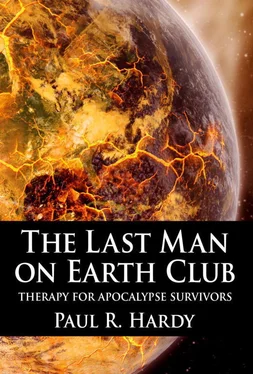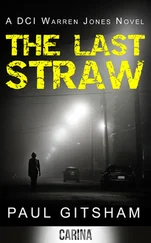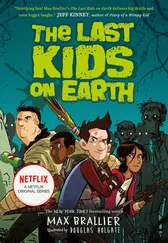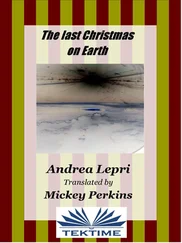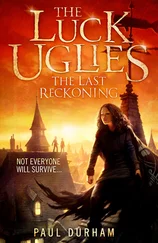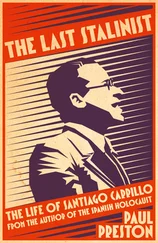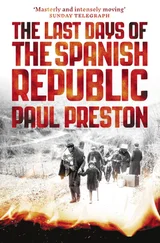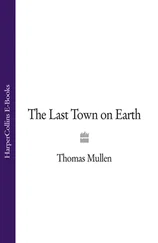He indicated the irregular layer of artificial material, dominated by rust and very red, but clearly pocked by flattened cables and pipes. We had reached 40,450 years before the present. “In fact…” said Ren, pointing out a dangle of glass wires, “you can see they were pretty advanced in some ways. This is a fibreoptic cable. They mostly used copper, we think, but there’s enough of this to show they were likely moving digital information around as well as analogue.”
“Do you keep that buried there just for tours?” asked Olivia.
“Nope. It’s the real thing. There’s hundreds of kilometres of it, all over the site.” He raised us all up again, and the readout showed we were 40,420 years before the present. “Above that, you’ve got the ground level stuff. That sticky, crumbly material there is pulverised tarmac. It normally gets broken up by plants and pretty much worn to nothing before the soil covers it, so something must have happened here to preserve it. And that’s the layer above. You see that?” He pointed out a greyish line above the tarmac, above which there were no more artefacts. “That’s the ash layer from the impact. You find that all over the world and it’s pretty thick around here, probably a couple of metres deep when it fell. In fact, it’s responsible for a lot of the preservation of the site — if the city hadn’t been covered by ash, there’d be a lot less left to find. And here’s the interesting thing…”
He took an instrument wand from the satchel he carried, and wafted the end past the ash layer. A low tone from the instrument raised in pitch as he did so. “It’s still radioactive. After all this time.”
“The asteroids were radioactive?” asked Iokan.
“No, asteroids usually aren’t. You get a bit of extra radioactivity in any impact layer because they absorb a lot of stuff from the sun, but this is way too much for that.”
“Ketan erak tri anno?” asked Katie.
Everyone looked at her. No one’s systems could translate what she’d said.
“I’m sorry?” said Ren.
Katie looked confused for a moment, as though not entirely sure where she was. She looked around. Then back at Ren.
“What are the levels?” she asked, in perfect Interversal.
“Oh, we’re safe, don’t worry.”
“What are the levels?” she asked again.
He glanced at the instrument. “You’re looking at a dosage of about forty microSieverts a day. You should be fine. You don’t get sick until you hit about four hundred milliSieverts, and that’s ten thousand times higher. The point is, the background radiation around here is three or four microSieverts. It’s not dangerous, but that ash layer is still too high by a factor of ten.”
“Were there nuclear accidents, during the impact?” asked Kwame.
“That’s possible, sure,” said Ren. “But the radioactivity is amazingly even over the whole continent. If you had nuclear accidents or even explosions, you’d expect the radioactivity to be greater at the site of whatever happened. So instead, you have to conclude it comes from the widest, most evenly distributed source, which is the ash from the impact.”
“But you said the asteroids weren’t radioactive…” said Pew.
“Right. They weren’t radioactive. Or at least they didn’t start out radioactive. But they were when they hit the atmosphere.”
They paused for a moment. Some of them made the connection.
“They defended themselves with nuclear weapons,” said Kwame.
“That’s what we’re thinking,” said Ren. “The isotope analysis backs it up. We reckon they saw the rock coming and tried destroying it or deflecting it with nukes. But all they did was break it up into lots of smaller rocks, and you can see that in the multiple impact sites. And they irradiated them as well, of course. It probably didn’t add up to a dangerous dosage for the survivors, but they had enough problems as it was.”
The group crowded back onto the bus after their tour of the archaeological site. I sent Veofol to find the driver, joking that if we couldn’t locate him, Veofol would have to take us back. He was qualified, but didn’t look like he relished the prospect.
No one in the group seemed to want to talk, least of all Katie. Iokan, however, had other ideas — ones I would have preferred to pursue myself at a later time.
“What was that language you were talking earlier?” he asked.
“I spoke Interversal,” she replied.
“Not all the time. You said something else in the trench, what was it… ketan erak tri anno?”
“I did not say those words.”
“That’s what I heard.”
“You are mistaken.”
“Okay. So what did you say?”
She paused. Was that the slightest sign of a furrowed brow?
“Iokan,” I said, “there’s no need to pester her.”
“I didn’t mean to pester, I was just curious…”
“If she doesn’t want to talk about it, she doesn’t have to.” I turned to Katie. “Katie? Is there anything you’d like to tell us?”
“Their tenacity is admirable,” she said.
Pew looked round at her. “Uh… you mean the archaeologists?”
“No. I mean the former inhabitants of this world.”
“Can you expand on that?” I asked.
“They did not have the technology to fully address their extinction. But they did everything they could to survive. They did not wait to die. I consider that to be admirable.”
Pew looked away. He’d grown a little grim during the tour. Iokan, though, failed to notice this and replied to Katie.
“Well, if that’s what you were saying… I have to agree. I think overall there’s a lot of positive things you can get from this place.”
“How do you make that out?” asked Olivia. “They’re all dead, aren’t they?”
“But they went down fighting. And okay, so they didn’t make it. Some things are too big to survive. Even so, life didn’t end. Look outside: it’s only, what, forty thousand years since it happened? Look how green the place is. There’s plenty of time for something else to evolve.”
“Yes,” said Katie. “The ecosphere will recover. New life will emerge. A new race of sapient creatures will evolve and move into space. Biological life is almost impossible to eliminate entirely.”
“Except yours,” said Pew. “Your world’s gone, isn’t it?”
“That is true. Nevertheless, biological life still persists.”
“Really?” asked Iokan.
“I have disclosed all that is necessary,” she said, and did not speak again.
After the archaeological layercake, Ren took them to a broader, shallower excavation, only a metre down into the earth. It bit another metre into the side of one of the mounds, and exposed the edge of an ancient building along with the pavement and road.
“So over here we’ve got a part of the site that hasn’t been compressed as much as the rest. We’ve been able to uncover an almost-intact street scene for visitors to look at.”
‘Almost intact’ for an archaeologist translates to ‘virtually destroyed’ for most people, but nevertheless you could make out the traces of an ancient city street. Looking down into the trench, we could see a cracked tarmac road surface lying next to a wide pavement of stone slabs, some of which had been replaced by tarmac repairs at some point in the city’s life.
“So here in the road you can see one of the railways,” said Ren, pointing down at deep grooves running through the remains of the road surface, containing what seemed like pitted, rusted metal bars. “The rails there have corroded a lot, but you can still see what they used to be. That’s pretty good stainless steel they had there. It’s got a high titanium content. So with that alone, we know they were well past the first industrial age. ‘Course, we’ve got plenty of other evidence, but steel’s always a good marker for tech development.”
Читать дальше
